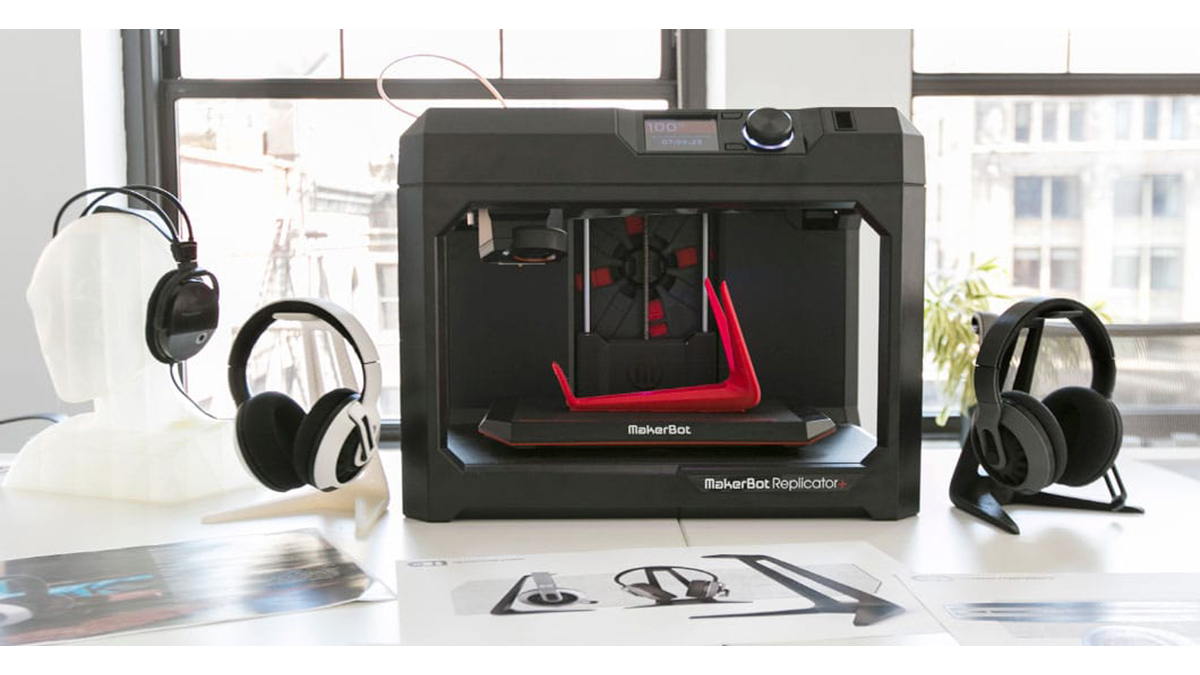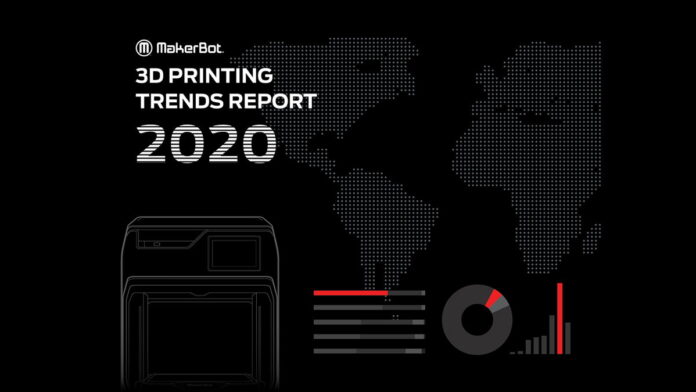More than 1200 professionals from many different regions, sectors and business roles took part in the survey in the 3D Printing Trends Report (Makerbot 3D Printing Trends Report) , conducted by MakerBot between August 21-26, 2020. This is important as MakerBot’s first report on trends and factors affecting the use of 3D printing. The company examines user behaviour and reveals their 3D printing preferences, needs and expectations with this research.
Founded in 2009, United States based MakerBot has released the results of its new 3D Printing Trends Report containing over 1,200 responses from professionals in many industries, including Aerospace, Industrial Goods, Military and Defense, Medical and Automotive. MakerBot CEO, Nadav Goshen explained that they are pleased to release the MakerBot 3D Printing Trends Report, their first report on the trends and factors that are impacting the use of 3D printing. Goshen said; “3D printing has come a long way since the early days of the technology in the 1980s. But as the technology moves from prototyping to production, we expect to see the expansion of its use and applications continue to grow at an exponential rate,” and noted that as a supplier, they believe it is their responsibility to look at these behaviours to better understand the needs of users and, thus, be able to deliver better products and services.
Respondents from many regions and sectors took part in the survey in the 3D Printing Trends Report
In the survey conducted by MakerBot with more than 1200 professionals in its global network between August 21-26, 2020, the centers of the respondents; North America (50%), Europe (20%), Asia (13%), Oceania (6%), Latin America (4%), South America (4%), Africa (2%) and the Middle East (1% ) regions. They represented more than 20 industries, including Military and Defense, Aerospace, Automotive, Medical and Dentistry, Industrial Goods, Arts and Entertainment, and Consumer Goods, while job roles varied greatly; engineering or development (37%), design (20%), print / lab operations (9%), senior management roles (9%), production or manufacturing (7%), procurement (1%), supply chain operations (1%) and other roles in their organisation (16%).
3D Printing Trends Report: Confidence in 3D printing to transform business operations increases
Nadav Goshen told that these findings confirm what they have known for some time; and that is the potential of 3D printing to transform business operations. Goshen said; “When faced with the kind of challenges that businesses have had to contend with over the last 12 months; it is not unusual to see them cut all but the most critical capital expenditure. However, this is clearly not the case with 3D printing. While COVID-19 impacted the business operations of nearly 70% of the respondents; 56% said that it did not impact their investment plans in 3D printing. In fact, when respondents were asked what their investment plans were for next year; 74% stated that they still had plans to invest in 3D printing”.
Stating that this is an incredibly positive response, Goshen added; “We believe, this signals growing confidence in 3D printing’s ability to improve resilience, responsiveness and, ultimately, the profitability of business operations”. The report also reveals that 50% of respondents plan to invest up to 100 thousand dollars for 3D printing.

Customisation is the main reason to prefer 3D printing
Survey respondents explained that the number one reason they choose 3D printing is customisation. 68% of the respondents need the ability to create special, low to medium volume production parts; and 57% want the ability to print complex geometries. However, 3D printing continues to play a much bigger role in the research and design phases. Concept modelling (70%), functional prototypes (66%), and research and development (44%) were the main applications for respondents. In addition, the respondents stated that the most important factors affecting the printer choosing are dimensional accuracy (61%) and reliability (65%). Among 3D printing technologies, FDM still remains the most used. The majority of respondents (77%) use FDM/FFF 3D printers in their repertoire, while 27% use SLA technology. As might be expected, plastics (93%) and resins (25%) are the main materials used.
Barriers to 3D printing application; cost and technical expertise
Cost and technical expertise are the main barriers to 3D printing application. 53% of respondents say that lack of budget is preventing them from fully utilising 3D printing; while 29% cite lack of technical expertise. Respondents expect technology, materials and applications to evolve in the next 3-5 years. 61% of respondents expect more materials to emerge, while 58% expect the cost of using the technology to decrease.
